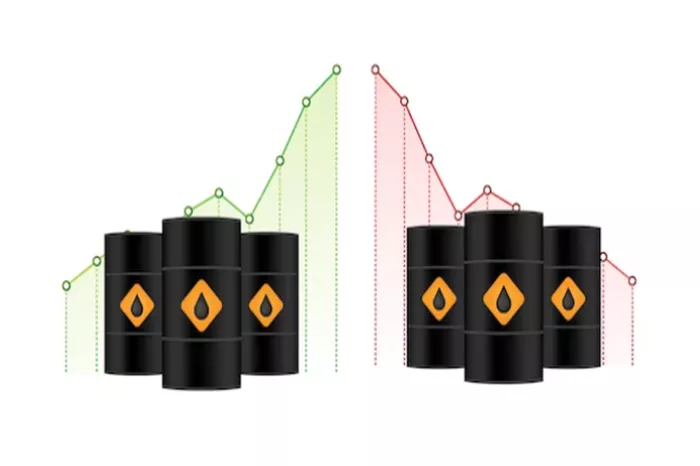Momentum in oil markets has continued to shift downward over the past two weeks, marked by a series of declines in key trading indicators. Over the last 10 trading days, front-month Brent crude saw seven lower settlements, eight lower intraday highs, and six lower intraday lows. As of October 21, the 30-day realized annualized Brent volatility surged to an 11-month high of 39.1%, reflecting a week-over-week increase of 3.1 percentage points. In Wednesday’s intraday session, December Brent crude fell by 1.7%, trading at $74.80 per barrel at 1:20 PM ET, while West Texas Intermediate (WTI) crude for December delivery declined similarly, settling at $70.55 per barrel.
Recent analyses highlight significant discrepancies in supply and demand estimates among leading energy agencies, complicating the assessment of actual global crude supply. The U.S. Energy Information Administration (EIA) reported that the United Arab Emirates (UAE) produced just 18,000 barrels per day (kb/d) above its target in September. In contrast, the International Energy Agency (IEA) reported a much larger overproduction of 348 kb/d. Commodity experts at Standard Chartered emphasize that ongoing demand concerns remain the primary bearish factor influencing oil markets.
On October 21, Fatih Birol, Executive Director of the IEA, indicated that “this year, global demand is very weak, much weaker than previous years,” suggesting that oil demand has decreased compared to prior years. However, Standard Chartered contends that while the growth rate of oil demand has slowed compared to earlier post-pandemic years, global oil demand itself has reached new all-time highs this year.
Following the release of the latest Joint Organisations Data Initiative (JODI) data on October 17, analysts at Standard Chartered concluded that global oil demand reached an unprecedented 103.79 million barrels per day (mb/d) in August, exceeding their pre-data release forecast by approximately 450 kb/d. This marks the third consecutive month in which demand has set a new record, with demand growth recorded at 1.32 mb/d in August. While this figure reflects slower growth than in previous post-pandemic Augusts, it still indicates robust demand.
The largest demand increases in August came from several countries, including South Korea (219 kb/d), Italy (185 kb/d), Saudi Arabia (117 kb/d), Turkey (99 kb/d), and Spain (88 kb/d). In light of the stronger-than-expected growth in August, Standard Chartered has revised its 2024 global demand growth estimate upward to 1.45 mb/d.
Traders appear to be overlooking the fact that non-OPEC supply has slowed more significantly than demand thus far in 2024. According to IEA estimates, non-OPEC supply growth is projected to decrease from 2.40 mb/d in 2023 to 0.93 mb/d in 2024, while demand growth is expected to decline from 1.99 mb/d in 2023 to 0.86 mb/d in 2024. Consequently, the IEA estimates that non-OPEC supply growth in 2024 will lag behind 2023 levels by 1.47 mb/d, whereas demand will have slowed by a lesser margin of 1.13 mb/d. Other energy agencies, including the EIA, have provided even larger estimates for the relative slowdown in supply. The EIA estimates that non-OPEC supply will decrease by 1.89 mb/d (from 2.52 mb/d in 2023 to 0.63 mb/d in 2024), while demand will reduce by 1.19 mb/d (from 2.10 mb/d in 2023 to 0.91 mb/d in 2024). Standard Chartered similarly projects a slowdown in non-OPEC supply of 1.83 mb/d for 2024.
On the supply front, Standard Chartered’s analysis indicates a potential global stock draw of 370 kb/d in the third quarter of 2024, even when factoring in a potential 1.3 mb/d of “ghost barrels.” Their model predicts a small supply deficit of 0.2 mb/d in the first half of 2025, assuming that voluntary output cuts are reduced but that Russia, Iraq, and Kazakhstan adequately compensate for previous overproduction. In July, these three OPEC+ members submitted compensation plans to the OPEC Secretariat to address overproduced crude volumes from the first half of 2024. OPEC has indicated that the full compensation for overproduced volumes will be completed over the next 15 months, ending in September 2025, with Russia compensating 480 kb/d, Iraq 1,184 kb/d, and Kazakhstan 620 kb/d.
Related topic:
EIA Reports Neutral Outlook for Natural Gas Prices
Dangote Refinery Launches Direct Petrol Distribution Amid Import Surge
Fuel Prices Surge Across India Despite Declining Crude Oil Rates

